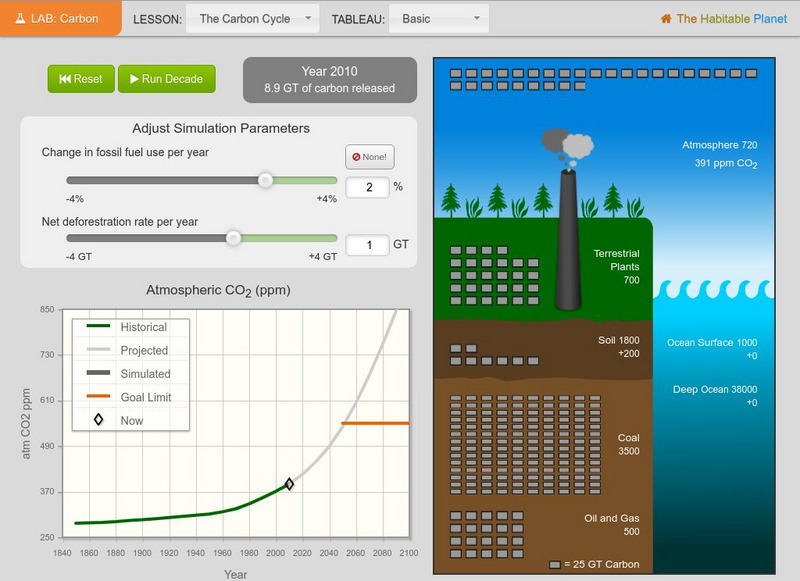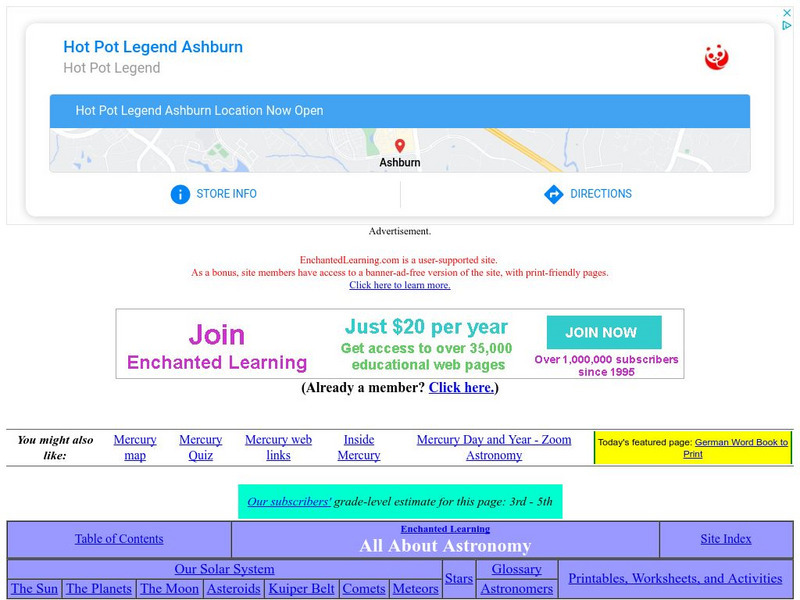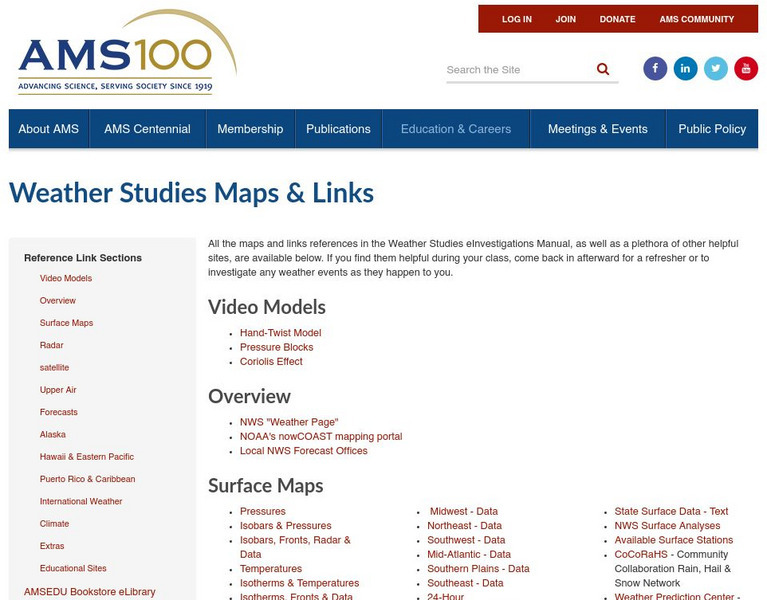Hi, what do you want to do?
Annenberg Foundation
Annenberg Learner: Carbon Lab
This lab uses a robust model of the carbon cycle to give an intuitive sense for how carbon circulates through the atmosphere, biosphere, oceans, and crust.
University Corporation for Atmospheric Research
Ucar: The Earth as a System
An overview of content about Earth and its atmosphere. The module was developed for middle school science teachers to provide background information for teaching the curriculum.
NASA
Nasa Star Child: The Hubble Space Telescope (Level 1)
This article for younger students introduces the Hubble Space Telescope and what it is doing in outer space.
Globe
The Globe Program: Learning to Benefit the Environment
The GLOBE program is a worldwide network of students and scientists working together to monitor Earth's atmosphere and water. There are lots of resources here, and you can email a student involved in the program to learn more about GLOBE.
US Geological Survey
U.s. Geological Survey: The Usgs and Science Education
"Explore things on, in, around and about the earth," with this web site dedicated to K-12 education from the United States Geological Survey. Homework help, science topics and fun learning games for students in Kindergarten through High...
PBS
Quest: How Do Greenhouse Gases Work?
Use this interactive infographic to learn about the function of greenhouse gases, and how they affect heat in the atmosphere.
PBS
Kqed: What Are Greenhouse Gases and Where Do They Come From?
Use this interactive infographic to learn about sources of the main greenhouse gases. Read facts, figures, and statistics about four important gases in the atmosphere.
NASA
Nasa Space Science Data Archive: Galileo Project Information
This is the homepage of all of the archived information about and from the Galileo Mission. Included is data from the flybys of Venus, Earth, Moon, and Asteroids Gaspra and Ida, as well as the current data from Jupiter and its moons. See...
Columbia University
The Climate System: Atmospheric Forces, Balances, and Weather Systems
The large scale horizontal flow of air in the atmosphere is driven by the imbalance of net radiation over the globe. This resource introduces us to the physical laws governing the horizontal motion of air. It also describes types of...
Other
Virtual Field Trip: Water/aquifers
This virtual field trip for middle school students looks at aquifers and their place in the hydrologic cycle. Students learn why and how it is important to protect the source of your drinking water and some unique details about the...
Enchanted Learning
Enchanted Learning: The Planets
This survey of the planets includes all the basics, size, mass, atmosphere, length of day, and the like. It features interactive activities and learning exercises and compares all of the planets in colorful tables.
Enchanted Learning
Enchanted Learning: All About Space: Mercury
The planet Mercury is profiled with information about its size, mass, atmosphere, length of day, and the like. Features include interactive activities and learning exercises.
NOAA
Noaa: Weather and Atmosphere
The collections in this thematic area provide educational resources that introduce concepts of weather and atmosphere. It provides activities and data for exploring weather and atmospheric sciences, and link to emerging research on these...
Smithsonian Institution
Smithsonian Environmental Research Center: Forces of Change:meet Your Atmosphere
This superb site has detailed information about the composition of the atmosphere, how it is always changing, how it protects life on earth, and the destructive impact human activity has on it. There is an atmosphere design lab, as well...
South Carolina Educational Television
Etv: Nasa Online: Light: Atmosphere
An interactive look at our atmosphere and factors which affect planet Earth. NASA measurements of volcanic eruptions, toxic emissions, aerosols, and wind patterns are all graphically displayed. Basic text plus bold visuals make this...
Other
Centre for Atmospheric Science: Ozone Hole Tour
Deals with ozone hole and related atmospheric issues and research. Has a multimedia tour of the ozone hole and many related links.
TED Talks
Ted: Ted Ed: A Guide to the Energy of the Earth
Energy is neither created nor destroyed - and yet the global demand for it continues to increase. But where does energy come from, and where does it go? This video examines the many ways in which energy cycles through our planet, from...
Other
American Meteorological Society: Data Streme Atmosphere
This site provides an extensive amount of weather information. Includes current information, forecasting, and historic weather related events. Weather map symbols and terminology explained.
Other
Digital Library for Earth System Education (Dlese)
This resource provides materials for teachers on a huge array of topics. Search site by topic, grade level, and desired output (such as lesson plan, case study, assessment or tutorial). Site is focused on earth science, geography, and...
Center for Educational Technologies
Nasa Classroom of the Future: Environment Module: Uv Menace
This site provides information and activities for classes to learn more about ozone depletion and UV radiation.
University of Illinois
University of Illinois Extension: Tree House Weather Kids: Air Pressure and Wind: Under an Ocean of Air Pressure
Animated resource helps young researchers understand air pressure and how we measure it.
NASA
Nasa: Weather
Though we live on the surface of the Earth, we actually live at the bottom of an ocean of air. Dynamic layers of air interact with the Earth's surface and the Sun's energy to produce the phenomenon of weather. The atmosphere is...
University Corporation for Atmospheric Research
Ucar: Satellites and Weather Teaching Box
Help your middle school student learn how satellites help make weather forecasts more accurate and how the COSMIC satellites collect data about the atmosphere by measuring bending radio waves.
University Corporation for Atmospheric Research
Ucar: Greenhouse Effect Teaching Box
This teaching box provides resources related to the greenhouse effect. It will help you teach how the greenhouse effect warms our planet.
























